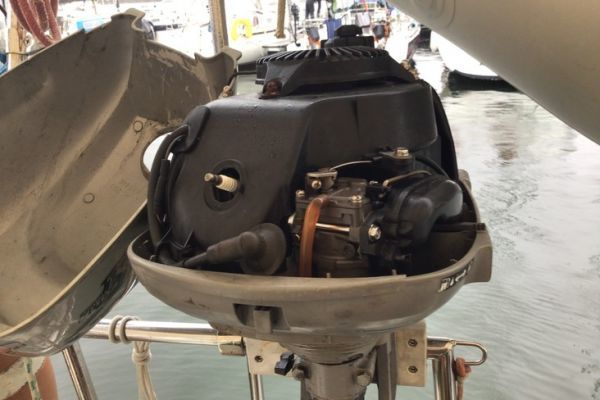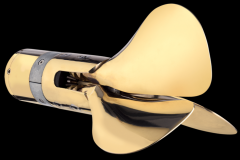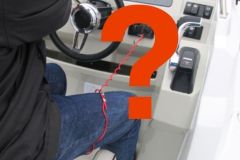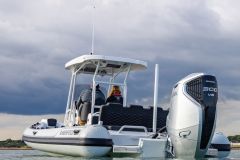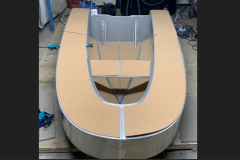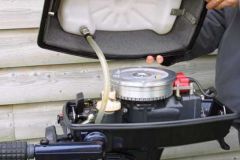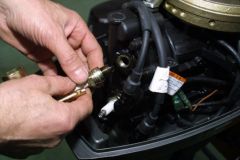The Croque Soleil tender is launched, fully inflated. Georges throws in a bailer, an inflator and two oars, just in case! All that's left is for the engine to be taken on board, as two people rowing this skiff is a real pain. Janine is about to carry out the most delicate operation of all: getting it into place without anything or anyone ending up in the water...
The engine is in place, everything has gone smoothly: the adventure begins, the engine starts... and suddenly, halfway to the beach, coughs, shakes and stalls!
- Georges, is the tank vent open?
- Yes, it's OK and the circuit breaker is in place!
- Damn, try starting again.
Nothing...
- Well, I'll be rowing out, but you'll be rowing back!
- Okay, but one day we'll really have to install a fuel filter on this engine ... I'm sure the carburetor got clogged again! Good thing we don't have an injector on this engine, we'll be able to fix it.
On this little dinghy, to row with the oars, the second crew member on board is all bent over at the stern, and with every stroke risks ending up in the water. So the engine is no luxury. Once back aboard the Croque Soleil, it's time to find out what's wrong with the dinghy engine, as the mooring season begins. Janine asks George:
- Should we start with ignition or carburetion?
- The carburetor for sure! It spent the whole winter without being winterized and there's still no filter.
Janine removes the plastic cover that hides the engine, removes the carburettor and dismantles the carburettor bowl. There's a pile of deposits at the bottom. The fault is certified: the carburettor has become clogged. It's time to install the filter they were able to obtain easily on shore. The carburettor has been cleaned and reassembled with a new gasket kit. With the new filter installed, all that's left to do is give it a try.
VRROOOUUUUMMMMM!!!!
The fuel is drawn into the tank, passes through the new filter and begins to fill the carburettor bowl. As the level rises, the engine intake draws in the fuel, which passes through the nozzle and mixes with the oxygen ingested by the air filter. Once this mixture is in the cylinder, the piston rises, compresses the fuel, and gives way to the explosion that turns the engine. The tender has its engine back.
Starting up a tender engine
To enable the engine to start properly, you must :
- The circuit-breaker must be in place to ensure engine ignition
- The reservoir has been vented to atmosphere
- Make sure the fuel inlet valve is open
- And that the choke is correctly adjusted if the engine is cold
Repair : Carburation and ignition
If the 4 elements listed above have been checked, the cause of the fault needs to be investigated.
Carburation or ignition? One of the two may be the cause of engine failure. As the spark plug is the quickest to dismantle and check, it's a good idea to check it first, especially if you're worried about dismantling a carburettor.
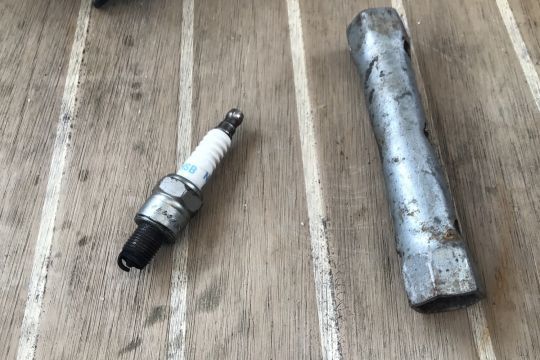
Ignition
In particular, we need to check the spark plug. You'll need to dismantle it using a special spark plug wrench. A visual check of its color will give you an idea of its condition: if it's too black or clogged, you'll need to replace it. Electrode gap is also a good thing to check on the spark plug. It should be between 0.7 mm and 1.2 mm, depending on the model, and this value can be found in the spark plug manufacturer's documentation. It is measured using a set of shims. If there is any doubt about abnormal electrode play, the spark plug must be replaced.
A start-up test will confirm whether the fault has been identified:
- Engine restarts: spark plug had to be checked or replaced
- Engine still refuses to start: a carburetion check may be the solution
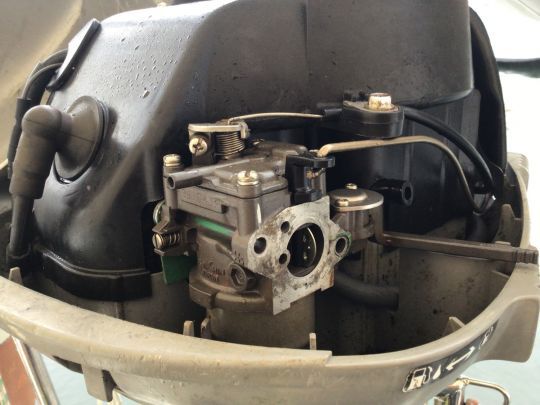
Carburation
Check fuel supply before working on the circuit, turn off the fuel tap. Then check that the filter, if fitted, is not blocked. If there's any doubt about its condition, replace it as a preventive measure. If there's no filter in the circuit, check that the hose feeding the carburettor from the fuel tank isn't clogged.
Once you've checked that the intake system is in good condition, you can check the carburettor if the fault persists.
Remove carburettor to start the engine: disconnect the throttle and choke control cables, then disconnect the fuel supply hose and finally loosen the screws that secure it to the engine intake.
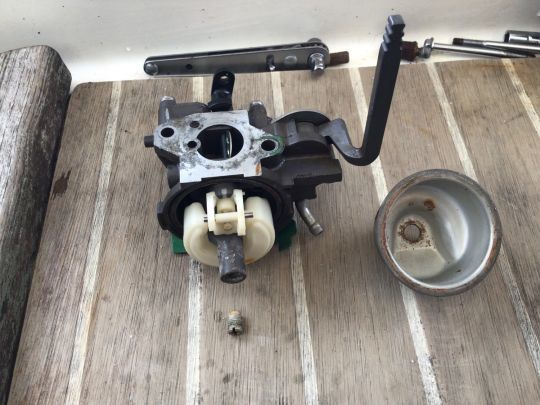
Removing the carburettor : For this operation, it's advisable to take precautions, such as sitting on a table, as the components are small and fragile, and to carry a bucket, as the fuel in the tank will leak out.
Dismantling the carburettor bowl will give you an idea of its condition. If dirt has accumulated at the bottom, the cause of the malfunction has been identified. A thorough cleaning of the bowl and float is the first step. The second step is to check that the nozzle is not clogged. When you remove it, you should be able to see through it, otherwise it's blocked.
Now that the tank is clean, the float is correctly raised and lowered, and the nozzle is unclogged, the carburetor can be reassembled with a new gasket kit, following the reverse procedure to disassembly.
Carburetor adjustment once you've made sure that the spark plug is in good condition, that the fuel supply is not clogged, and that the carburettor is clean and reassembled with new gaskets, you've done everything you can to ensure that your engine starts easily. And that's almost all, because once the engine has restarted and warmed up, a carburettor adjustment will be the final step in the carburetion process. This is an operation that requires experience and a thorough knowledge of your engine. You can ask an experienced person to accompany you for the first time, otherwise here's the basic principle: to carry out this adjustment, you need to adjust the richness screw and the idle screw.
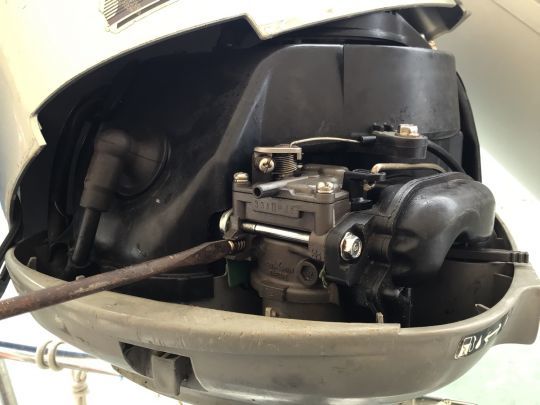
We start by adjusting the richness screw. Turning it clockwise reduces fuel flow, turning it counterclockwise increases it. You need to find the right balance: the engine won't run smoothly if there's too much or too little fuel.
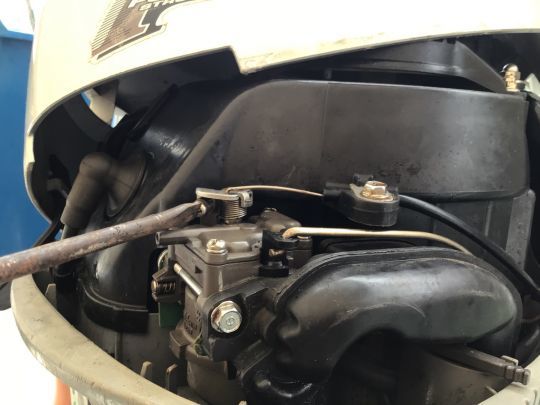
Once the richness screw is set correctly, you need to find the right idle speed. A good idle speed should be fairly low, but not too low to prevent the engine from stalling. Tightening the screw increases rpm, while loosening it increases rpm.
Preventing breakdowns
Carburation first of all, fuel quality is essential for this type of engine. Its cleanliness helps to keep the tank as clean as possible, so as not to clog the circuit. You should therefore use clean cans to transfer fuel, and funnels with sieves if possible. Also, if there is no fuel filter on the suction circuit, it's advisable to install one. And last but not least, a carburetor repair kit can get your engine up and running again quickly if you've been properly prepared.
Ignition spark plugs: it's advisable to replace them as a preventive measure, in accordance with the manufacturer's recommendations. If, despite this precaution, a breakdown should occur, it's advisable to have several copies on board so you can change them.
Maintaining your dinghy's engine and managing your stock of spare parts will ensure a more comfortable season at anchor.
